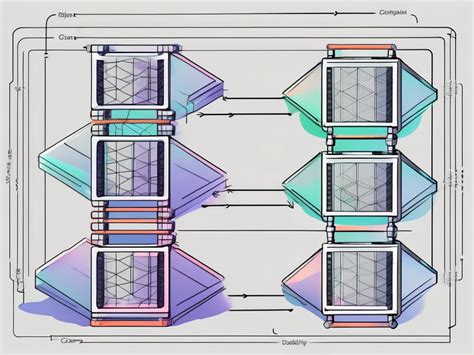Cryptocurrency and blockchain scalability: explore layer 1 and layer 2 solutions
Blockchain technology has revolutionized the way of thinking about digital devices, allowing data to be stored, transmitted and safely handled in a decentralized manner. However, as the number of users and network transactions increases, scalability problems arise, leading to congestion, slower transaction times and eventually reduced acceptance. In this article, we plunged into the world of blockchain layers and explore the differences between layer 1 (blockchain) solutions and layer 2 solutions to cryptocurrency.
What are blockchain layers?
Blockchain layers refer to the various components that make up the blockchain network. These layers work together to ensure the safety and scalability of the underlying blockchain. The most common layer structure:
* Layer 1: Blockchain network (BCN) – This layer represents the entire blockchain, including its architecture, protocol and basic data structures.
* Layer 2: Layer scale solutions 2 – These solutions are designed to repair scalability, starting from Blockchain main network transactions.
Layer solutions

Layer solutions are designed to create a more scalable blockchain network. The most common approach is to introduce additional layers at the top of the existing BCN, allowing users to interact with blockchain in a new way. Some examples are as follows:
* Layer scale protocols : For example, optimism (optimism), polygon (matic) and Solana Spark.
* Layer 1 ecosystem integrations: As offered by POLKAD (DOT) and cosmos (Atom).
* Layer Wallet 2 : Services such as coinbase wallet, metamask and Trust Wallet provide easy access to cryptocurrencies.
Layer solutions
Solutions 2, on the other hand, focus on reducing network congestion and improving scalability. The purpose of these solutions is to unload transactions from Blockchain’s main network, allowing you to process faster and more efficient transactions. Some examples are as follows:
* Layer 2 Optimized blockchain platforms : For example, the Ethereum 2 layer (EIP-1559) and the POLKADOT relay chain.
* Layer 2 Wallet : Services such as Binance Smart Chain (BEP-20), Kraken Wallet and Trust Wallet provide access to cryptocurrencies while maintaining decentralization.
Challenges and restrictions
Although layer solutions are designed to create a more scalable blockchain network, there are significant challenges and restrictions. They belong to:
* Higher transaction rates : As transactions are performed outside the chain, users need to pay higher fees compared to traditional payment systems.
* Decreased transparency : When performing non -cadence transactions, the history of the transaction is not stored in the main blockchain, which makes it difficult to monitor its wealth.
Conclusion
The choice between layers 1 and 2 depends on the specific needs of the cryptocurrency ecosystem. While layer solutions seek to create a more scalable network, they have significant challenges and restrictions. Layer solutions offer higher scalability, but affected commitments require careful consideration.
When choosing a blockchain solution, it is essential to consider the benefits of each approach and choose what is best suited for the objectives of cryptocurrency. By understanding the differences between layers 1 and 2, you can make a well cast decision and ensure a successful introduction or growth strategy for the cryptocurrency project.
